
The physical geography of Brunei is a complex compact area of 5,765 km2 of land and 500 km2 of water spread across the coastal plains of North Borneo. There are mountains to the east and hills to the west, with the country divided into two by the Limbang district of Malaysia. The area of the capital Bandar Seri Begawan, the Port of Muara, Kuala Belait, and Tutong lie to the west of Brunei Bay, and the Temburong district lies to the east. A four-lane bridge opened in 2019 connects these two parts of the country, and is 30 kilometres long, cost $1.6 billion, and cuts the travel time to less than 30 minutes between the two parts. The Sultan of Brunei laid the foundation stone of the bridge on 16th January 2016, and he rules a country with only one bordering nation, Malaysia, with 70% of his land covered by forests, and communications mostly done by the local population by car, as petrol is so cheap. There is a national highway system, public bus systems, airports, taxis, cycle lanes, and rapid transit systems.
Brunei is associated by many people as a major source of oil and tanker transportation, but ironically it was coal that was first produced in Muara, the only port of Brunei Darussalam (‘Darussalam’ is Arabic for ‘Abode of Peace’). This Muara coal mine was first operated commercially in 1883 when William Cowie was given the concession rights to mine coal. He sold these mineral rights a few years later to Rajah Charles Brooke (1829-1917), who quickly renamed it as the Brooketon Colliery after himself. Brooke was known as the White Rajah of Sarawak, and was the nephew of adventurer James Brooke (1803-1868), who helped the Sultan of Brunei put down a rebellion in 1839.
Hundreds of coal miners were employed in the Muara mine, with 650,000 tons of coal produced between 1889 and 1924 at an average of 20,000 tons per year by the Sarawak Government. Sarawak was part of the realm of Brunei until 1841 when James Brooke was granted a large area of land around Kuching to the south of Brunei by the Sultan of Brunei. The mine suffered after the ‘boom and bust’ prices of coal in the early 1920s, and closed down in 1924. An overgrown railway line and abandoned steam locomotives remain to this day in Muara.
Oil exploration began in Brunei in 1899 at Ayer Berkunchi with the first recorded well drilled between Muara and Bandar Seri Begawan, later becoming the capital of Brunei Darussalam. Enthusiasm was high to find more oil, and six companies were involved in the oil search including Royal Dutch Shell, which began operations in 1913 after discovering a large oilfield at Miri in Sarawak, just over the border from Brunei. Dozens of onshore and offshore oilfields have since been discovered within Brunei and also in Sarawak. Seria oilfield was discovered in 1929 as the first commercial oilfield in Brunei, owned by the British Malayan Petroleum Company, with the first crude oil exported in 1932.
In 1949, an oil preparatory oil trades school was established with an apprenticeship scheme aimed at developing technical skills in the oil industry for Brunei Shell Petroleum (BSP), the largest oil and gas company in Brunei Darussalam with a Head Office in Seria. This upstream oil company has the core activities of exploring for oil and producing oil and gas from onshore and offshore fields for domestic use, and LNG exports to international countries. The Petroleum Authority of Brunei Darussalam was established in 2019 to better represent all of the exploration, production, transport, and sale and marketing functions of a big petroleum and gas organisation.
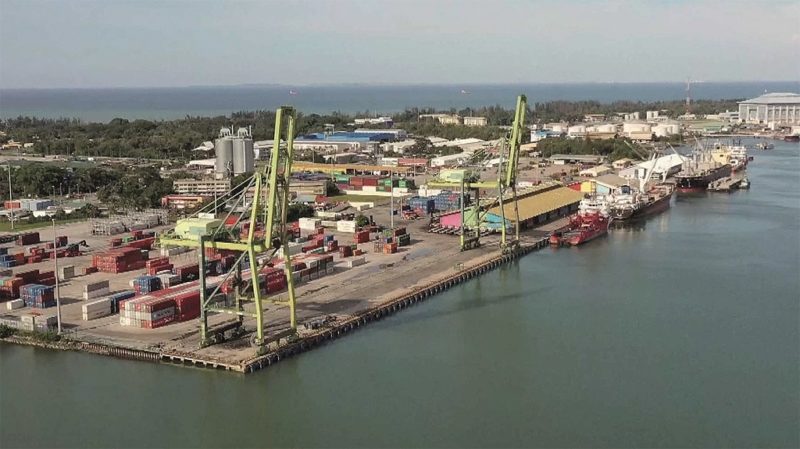
HISTORY OF BRUNEI
The history of Brunei has been about the settlements and societies located on the north coast of Borneo for centuries, as well as the ‘Indianised’ kingdoms and empires of its long history. The Chinese were trading camphor and pepper from as early as 835 AD. Awang Alak Betatar was one of the first group of founders of Brunei, and was chosen as leader because of his ability to rule, and he then travelled to Johore in Malaya, embraced Islam, married the daughter of a Sultan Bahkei of Johore and received the title of Sultan Muhammad Shah from him. He then took the title of the first Sultan of Brunei in 1363. Some of the Sultans of Brunei ruled for only short periods, being murdered by relatives or other claimants, but the Sultans of Brunei that ruled for a generation or longer were:-
Sultan Sulaiman 1432-1485 53 years
Sultan Saiful Rijal 1533-1581 48 years
Sultan Abdul Jalilul Akbar 1598-1659 61 years
Sultan Abdul Momin 1852-1885 33 years
Sultan Muhammad Alam II 1906-1924 18 years, died of malaria
Sultan Ahmed Tajuddin 1924-1950 26 years
Sultan Omar Ali Saifuddien Alam III 1950-1967 17 years, abdicated for his son
Sultan Hassanal Bolkial 1967-Present
In 1971, Brunei on the north west coast of Borneo, ceased to be a British protectorate after more than eighty years, but Britain continued to be responsible for the external affairs of the sultanate, the Sultan at the time of writing being the 29th of his line in Hassanal Bolkial, born in 1946 and with an estimated oil wealth of over $20 billion. The Sultan is often to be found playing polo at the Brunei Polo Club in his spare time, and his ceremonial gold plated car also has some parts made from solid gold. The Istana Nurul Iman is the official residence of the Sultan of Brunei in Bandar Seri Begawan and the seat of the Brunei Government. It is the largest residential palace in the world with 1,788 rooms, and covers well over 200,000 square metres in area. There are two large mosques in Brunei, the Omar Ali Saifuddien Mosque cost £1 million to build in the 1950s, and was opened on 26th September 1958.
Brunei has a mountainous interior intersected by a number of rivers, and a narrow coastal strip. The climate is tropical, hot and humid all year round but cool enough at night. Yearly tropical rainfall varies from 100 inches on the coast to 200 inches in parts of the interior. Most of the income of the country of Brunei Darussalam comes from LNG onshore and offshore gas fields developed by the Brunei Shell Petroleum (BSP). Natural gas is also produced and exported to Japan and other countries, with other exports being rubber, timber, minerals and aggregates.
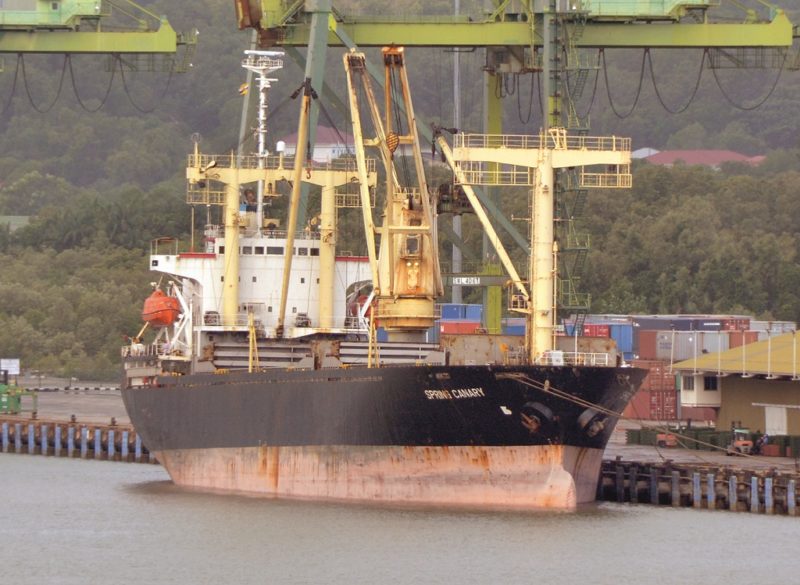
The population are of Malay origin and represent nearly 70% of the people, with the Chinese forming 23%. The Sultanate was at the height of its powers in the 16th century, ruling all of Borneo and parts of the Sulu Islands and the Philippines. The Sultanate went into a decline towards the end of that century, finding itself under pressure from both European powers and local pirates. The Sultan was forced into concessions to Britain and James Brooke, whom he made Rajah of Sarawak in 1841. The area of Brunei today is 2,226 square miles in two nearby land areas on the Bay of Brunei, and the flag of Brunei Darussalam is yellow with a black and a white diagonal stripe and a red State emblem. Bandar Seri Begawan is the capital of the country, some 17 miles from Muara Town and Port.
Muara is located on the easternmost tip of West Brunei, with the ferry port of Serasa to the south of Muara and with ferry links to Labuan in North Borneo on the opposite side of Brunei Bay. The South China Sea is to the north of Muara, to the south is Brunei Bay, and across the bay is the island of Pulau Muara Besar. To the east lies the second land area of Brunei Darassalam, separated by the land claimed by Sarawak, now part of Malaysia. The island of Borneo, including the major oilfields of Tandjung Selor and Balikpapan, is mostly part of Indonesia.
The fishing village of Muara was inhabited by a small group of Malay fishermen in the late 1800s, and coal sold to passing steamships was mined from 1883 to 1924. A wooden railway line was built to transport the coal to the deep-water anchorage at Muara, and wharves and jetties were built to allow steamships and barges to berth. The population of Muara is small, with 1,447 people in 1911, and only 2,102 people in 2016. The first postage stamp of Brunei Darussalam was issued in Muara, and in 1984 Brunei Darussalam became the 168th member of the Universal Postal Union (UPU) formed in 1874.
The Japanese occupied Brunei during World War II and attempted unsuccessfully to reopen the Muara coal mine. Muara was the landing location of the Australian forces as part of the Borneo Campaign in 1945 at the end of the war, which liberated Brunei from the oppressive rule of the Japanese. In the post-war years, under the rule of Sultan Omar Ali Saifuddin, Muara Port was opened for commercial operations on 1st May 1974. The Ports Department of Brunei Darussalam took over the operation of the port on 1st January 1986, forming the Royal Customs and Excise Department.

The Muara Container Terminal was operated by the PSA International until 1st April 2007 when it was turned over to the Brunei Darussalanm Government. There are two gantry container cranes of 40 tonnes capacity on the berth with a quay length of 250 metres and an overside depth of 12.5 metres. There are six reach stackers, three empty container handlers, five forklifts and over a dozen trailers for use at the container terminal.
The Maritime and Port Authority of Brunei Darussalam (MPABD) was established as a corporate body in September 2017. Part of the deep-water port of Muara is occupied by a jetty of the Muara Terminal of Brunei Shell Petroleum (BSP), with a large number of oil tanks as well as numerous bottled gas filling points, and tanks for bitumen and other oil products. There are three berths at the long single wharf in the Port of Muara as follows:-
Conventional General Cargo Berth – Rubber, timber, general cargo
Container Quay berth – Two gantry cranes and much other equipment
Aggregates Wharf – Bulk and aggregates shipments in dry bulkers of up to Panamax size
The loading of liquid natural gas (LNG) is done at the sea terminal of Lumut further to the west along the coast at position 4°42′ North, 114°26′ East, with LNG by far the major export revenue earner, and production of LNG is set to double to 500 million tonnes per year by 2030. The Lumut liquefaction and export terminal of 130 hectares in area was opened in 1987 at a cost B$500 million, with a team of 500 workers and pumping 6.7 million tonnes of LNG per year. The long 4.5 kilometre jetty with the new side berth extending 430 metres to the west of the existing jetty, is an open sea berth without any breakwaters of any kind and is very much exposed to the weather elements from all sides.
Thus, LNG carriers have restricted loading periods with a maximum capacity of 155,000 m3, and with loading carried out via the ‘midships manifold, and always berthed starboard side to the berth. The LNG is supplied to the terminal from the offshore South West Ampa, Fairley and Gannet gas fields, with over 30 years of LNG reserves for the future.
The container throughput tonnage at the Port of Muara was 118,000 TEU in 2016, and rose to 125,000 TEU in 2020. The general cargo throughput tonnage was 750,000 tonnes in 2018 and 700,000 tonnes in 2020. The Port of Muara is being further developed by the dredging of the Muara Cut, constructing additional industrial and port facilities on the nearby island of Pulau Muara Besar off the ferry port of Serasa, and linking the latter to the mainland with a brand new bridge.

The Muara Container Terminal was operated from May 2009 by the Philippines based International Container Terminal Service Inc (ICTSI), until replaced in early 2017 by Muara Port Company Sendirian Berhad, a joint venture with Beibu Gulf Holdings of Hong Kong. The Port of Muara benefits from being part of the modern ‘Chinese Maritime Silk Road’ that runs from the Chinese coast to Singapore and on to the southern tip of India, west from India to Mombasa and Kilindini harbour in Kenya, through the Red Sea to the two lanes of the Suez Canal to the Mediterranean ports of Piraeus, Trieste, Venice and others, to eventually finish in North European ports.
Storage areas in the port are as follows:-
Dedicated container terminal 92,035 m2
Container Freight Station 5,000 m2
Open Area 32,000 m2
Transit Warehouse 7,050 m2
Warehouses 32,020 m2
Inland Container Depot (ICD) 18,417 m2
Muara Export Zone (MEZ) 22,280 m2
The deep-water port of Muara has calls today by sixteen shipping lines from fifteen ports in the South East Asia region. The regular shipping lines frequency of call and their routes are as follows:-
NAME ROUTES FREQUENCY
Maersk Line – Singapore, Muara, General Santos, Panabo, Philippines Weekly
Evergreen – Hong Kong, Shekou, Muara, Kota Kinabalu, Tanjung Manis Weekly
PIL – Pasir Gudang, Port Klang, Singapore, Muara, Kota Kinabalu Weekly
MTT Shipping – Singapore, Muara, Kota Kinabalu, Bintulu, Pasir Gudang, Port Klang Weekly
Amman Line – Bintulu, Pasir Gudang, Port Klang, Singapore, Muara, Kinabalu Weekly
Harbour-Link – Nansha, Hong Kong, Kota Kinabalu, Muara, Kuching, Bintulu Weekly
Silver Line – Singapore, Muara, Labuan, Kota Kinabalu, Singapore Weekly
MSC – Singapore, Muara, Kota Kinabalu, Kuching Weekly
COSCO – Various Feeder service around South East Asia
OOCL – Various Feeder service around South East Asia

Hapag-Lloyd – Various Feeder service around South East Asia
CMA-CGM – Various Feeder service around South East Asia
APL – Various Feeder service around South East Asia
NYK – Various Feeder service around South East Asia
Mitsui OSK – Various Feeder service around South East Asia
‘K’ Line – Various Feeder service around South East Asia
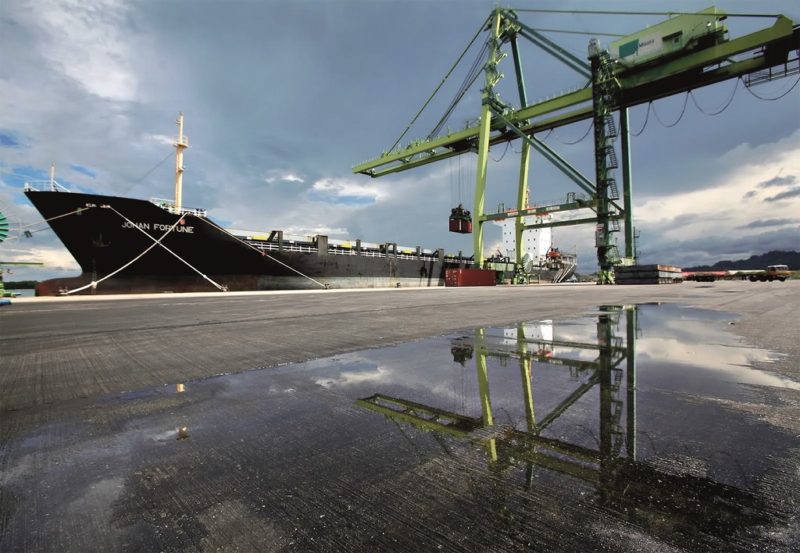
Evergreen operate the chartered container ship Stride of 24,800 dwt and built in 1997, while feeder container ships include Eponyma of 6,013 dwt built in 1993, and Philemon of 12,300 dwt built in 2010. The Serasa Ferry Terminal operates a three times daily passenger service to Labuan Island in Sabah (Malaysia), and a less frequent service to Jesselton Point Ferry Terminal (Sabah) for visits to nearby beautiful Gaya Island, using four small ferries from 140 grt to 184 grt at 0800, 1200 and 1645 hours. Some 264,000 ferry passengers entered Brunei during the five years between 2014 and 2018 from Labuan and Sabah. The Pilot Boarding Station for all ships arriving at the Port of Muara is five miles off Muara Beach.
The Cruise Ship Centre at Muara has a modern glass frontage and wooden seating inside a large waiting room, with cruise ships berthed on the long conventional general cargo quay. Royal Caribbean International (RCI), NCL Cruises, Star Clippers, Seabourn Cruises, Oceania Cruises and Regent Seven Seas Cruises will call during the 2022 and 2023 cruising seasons. An average of fifteen cruise ships per year called in Brunei during the six year period between 2014 and 2019.
THE WHITE RAJAHS OF SARAWAK
During the reign of Sultan Omar Ali Saifuddin II, violent disturbances occurred in Sarawak, and the 1839 rebellion was only put down with the help of British adventurer, James Brooke, the Governor of Sarawak and later the first White Rajah of Sarawak. However, Brooke never gained control of Brunei, though he did attempt to, and after asking the British Government in London if this would ever be acceptable, the answer came back in the negative as Brunei had a very definite sense of national identity and a ruling Sultan.
The Sultan of Brunei and James Brooke came into military conflict in 1843, resulting in the Sultan being defeated. In 1846, Brunei Town was attacked and captured by the British, and Sultan Saifuddin II was forced to sign a Treaty where Labuan to the north was ceded to the British under the Treaty of Labuan. The Sultan then continued to lease and cede further stretches of coastal land to Sarawak and to North Borneo (Sabah). These seizures of land by the White Rajahs of Sarawak were acceptable to the Sultan of Brunei as the Sultan gained annual payments for the land.
The British thus had control of most of the north coast of Borneo in the colony of Sarawak, but the Sultan of Brunei stopped this advance by stealth when Sarawak asked for Limbang, which the Sultan of Brunei refused. This was quite a shock to the White Rajahs of Sarawak, but they later took Limbang, which today separates the two land parts of Brunei, against the wishes of the Sultan.
In 1906, the British gained a residency in Brunei, but a previous report by Malcolm McArthur in 1904 to the British Government prevented the nation being colonised completely. This British residency, with the Sultan having complete control over internal policies, continued until 1984.
By the latter date, Brunei was no longer an impoverished nation, but had grown rich from oil revenues and particularly from Royal Dutch Shell. The White Rajahs of Sarawak in the 20th century were Charles Vyner Brooke (1874-1963) and White Rajah from 1917 to 1946, Bertram Brooke (1876-1965) and White Rajah (Tuan Muda) of Sarawak, and Anthony Brooke (1912-2011), who died in New Zealand after being Rajah Muda of Sarawak.
The Sarawak Steamship Company Ltd. was formed on 1st July 1875 to link Kuching in Sarawak with Singapore, and became a subsidiary of the Straits Steamship Co. Ltd. with links to Blue Funnel Line of Alfred Holt & Company.

In 1919, the company started the first travel business in Sarawak, as well as having a fleet of river paddle steamers, launches and powered barges. Coasters included Royalist of 210 grt, Sarawak of 120 grt built in 1906, the twin screw Auby of 836 grt built in 1908, Gladys of 358 grt built in 1910, and Angby of 768 grt built in 1913. The twin screw Vyner Brooke of 1,670 grt was completed in February 1928 by the Ramage & Ferguson yard at Leith on dimensions of overall length 240.7 by 41.3 by 16.1 feet and was powered by twin triple expansion steam reciprocating engines supplied by the yard. The motor coaster Rejang of 400 grt was completed in 1934.
The fleet in 1946 had five passenger and cargo ships in Angby of 1913, the standard ‘Empire’ coasters Belaga and Bruas of 977 grt built in 1945, and two quarterdeck coasters built by the New South Wales Dockyard in Australia in 1945 as Timbali and Ong Tiang See of 257 grt. The larger passenger and cargo Rajah Brooke of 2,311 grt was launched at the Caledon yard at Dundee on 30th September 1947 and completed in March 1948. She had dimensions of overall length 272.6 by 47.8 by 16.0 feet and was powered by twin six cylinder oil engines. She was registered under the Straits Steamship Company but served Sarawak from Singapore and was broken up in 1980. Post-war new coasters for the Sarawak Steamship Co. Ltd. were the twin screw Auby of 1,733 grt built in 1954, and Rejang of 589 grt built in 1955. The company ceased shipowning around 1975, but is still in business today after almost 150 years of service in the travel and tourism, advertising and air cargo businesses.
The Sabah Steamship Company of Sandakan in North Borneo ran an inter-port service from Labuan to Tawau calling at Jesselton, Sandakan, Usukan, Kudat, Lahad Datu and Simporna. The small coasters Sabah built in 1903, Kalamantan built in 1918, Klias built in 1927, and Kinabalu of 429 grt, launched by the Ardrossan Dockyard on 27th October 1914, served this service to North Borneo, which achieved its independence through Malaysia on 16th September 1963 and changed its name to Sabah. Kinabalu was wrecked on 29th September 1940 on Batu Mandi Rocks to the north of Jesselton while on a voyage from Jesselton to Sandakan with general cargo and livestock. The Sabah Steamship Company had ceased shipowning by the end of the war.
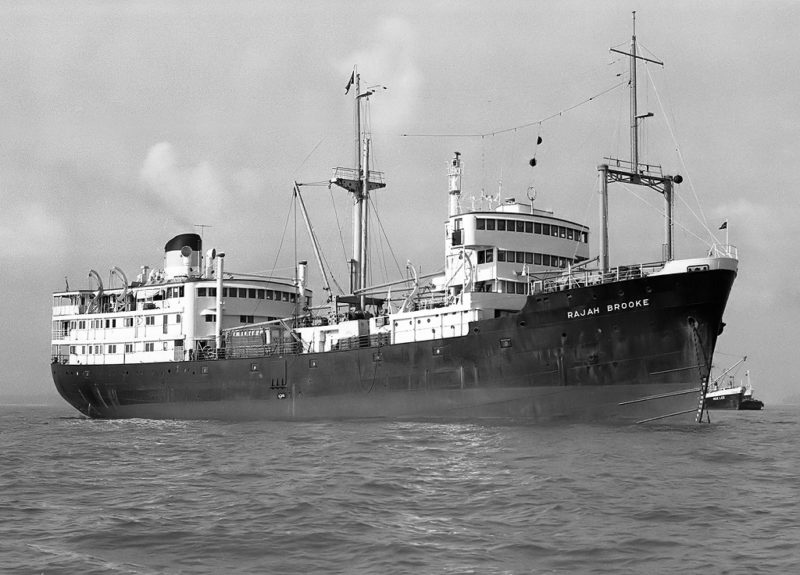
INDEPENDENCE OF BRUNEI
The Sultan of Brunei participated in talks prior to 1957 to form a Federation of Malaysia along with the Federation of Malaya, Sarawak, North Borneo (Sabah) and Singapore. The Sultan decided against joining due to the issue of oil profits and the massive popular opinion against the move. However, a popular coup occurred in Brunei after this decision became publicly known, but however failed while the leader of the coup was abroad seeking assistance. Another grouping being considered prior to 1963, was a Federation between Sarawak, Brunei and North Borneo (Sabah), but this again was rejected on the issue of oil revenues and the possible limitation of the power of the Sultan of Brunei.
On 14th November 1971, Sultan Hassanal Bolkiah, the current Sultan, left for talks in London regarding amendments to the 1959 Constitution of Brunei. A new agreement was signed on 23rd November 1971 with the British representative continuing in Brunei. Brunei was granted full independence from Britain and full internal self-government, while Brunei and the U. K. agreed to share security, defence and external affairs. A later Treaty signed on 7th January 1979 granted Brunei complete control over international responsibilities as an independent nation, with the Date of Independence fixed as 1st January 1984. Sultan Hassanal Bolkiah read out the Proclamation of Independence on this date, with Brunei becoming a nation of the United Nations in New York on 22nd September 1984, as its 159th member.
Brunei joined the ASEAN economic communities in 1984, with massive economic growth from its huge petroleum oil and gas fields, both onshore and offshore. As a result, the GDP of Brunei increased by 56% between 1999 and 2008, and transformed Brunei into a major oil and gas player in the world. Brunei has the second highest ranking on the Human Development Index among the nations of South East Asia after Singapore, the ‘Tiger’ of South East Asia. The Treaty of Protection signed by the Sultan of Brunei and the British Government in 1888 that made Brunei into a British protectorate had served the Sultan and his people well for almost one hundred years until independence was achieved in 1984.
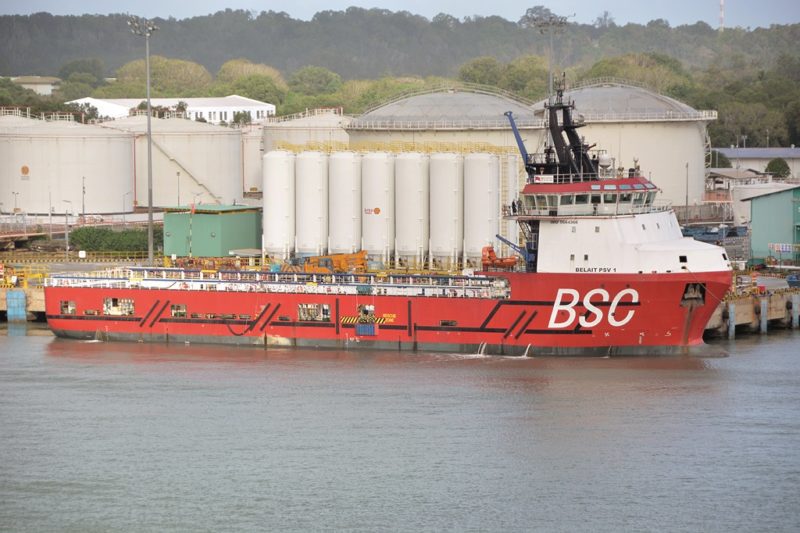
BRUNEI OFFSHORE OILFIELDS
Shell Petroleum acquired licences in 1954 in the offshore Brunei region when Brunei extended its territorial waters to include the Continental Shelf. The first oil well was drilled in 1957 from a fixed platform but turned out to be dry, and this was a portent of another seven years of fruitless struggle to find oil and gas offshore from the onshore Seria oilfield in Brunei. Finally, in early June 1964 oil and gas were found ten miles offshore from the Seria oilfield in a water depth that varied from ten to forty metres in a series of underground layers of sand. The extensive AMPA gas and oilfield contained 400 oil reservoirs and 380 gas reservoirs and was thus a very important gas and oilfield. The floating drill vessel Sidewinder of Zapata Offshore drilled a well to a depth of 9,480 feet, and found oil with an oil flow of 4,000 barrels per day below the 8,000 feet depth mark.
A second mobile drilling unit was sent from the Middle East to ‘spud’ another big flow of oil nearby. This drill unit was an oil drilling platform 165 feet by 120 feet, and two production oil platforms were then sent and renamed AMPA-1 and AMPA-2 to be installed in 75 feet of water depth and eight miles offshore. This pair of production platforms have been in use for decades with periodic revamping, maintenance and repairs to prevent the general deterioration of the platform legs and structures.
A gas field was also found to the west of this area by the joint enterprise of the Brunei National Petroleum Company and Royal Dutch Shell, and located thirteen kilometres off Kuala Belait in Brunei Darussalam, producing large quantities of gas, as well as some oil. Kuala Belait is located at the westernmost part of Brunei Darussalam and is the administrative town of Belait District with a population of 4,260 people in 2016. It is situated near the mouth of the Belait River and close to the border with Malaysia and the oil port of Miri. This gas field is the AMPA SOUTH WEST gas field, and a total of over eighteen oil and gas producing wells had been drilled all along the coast of Brunei Darussalam by 2004.
Brunei Shell Petroleum (BSP) is by far the largest oil and gas production company today in Brunei Darussalam. The core activities include the search for new oilfields, as well as producing oil and gas from onshore and offshore field for domestic use and export worldwide. These operations are supported by a highly dedicated set of professional geologists, petro-physicists and oil engineers, as well as administrative staff. BSP supplies 350,000 barrels of crude oil and LNG gas equivalent every day to countries such as Japan, Korea, Indonesia, Australia, and many other countries worldwide.
Brunei Shell Petroleum (BSP) operates well over two hundred offshore structures linked by over 5,000 kilometres of oil and gas pipelines, recovering oil and gas from over 4,500 individual reservoirs produced through more than 800 wells. BSP is the real backbone of the economy of Brunei Darussalam and employs four thousand permanent staff and over 20,000 contractors from all over the world. The GDP of Brunel Darussalam is very much dependent on the flow of oil and LNG, and the considerable export earnings support the growth, social welfare, and further development.
BSP discovered oil in the Geronggong prospect in March 2011 in a well drilled by deep-water drillship Noble Phoenix in an area 62 miles offshore. The water depth of around 1,000 metres was the deepest water BSP oil discovery in offshore Brunei, with further oilfield appraisals made over the following two years. BSP normally charters oil rig supply ships to service these offshore fields, including Belait Barakah, Amarco Tiger, Petani Selatan and Posh Endurance of PACC Offshore Services, as well as their owned Langling and Lelayang of 494 grt. Posh Endurance began a contract in the summer of 2020 for accommodation support during a maintenance campaign on all of the drilling rigs and oil production platforms in Brunei Darussalam.
A serious oil spill occurred on New Year’s Day in 2012 along the coastline between Kuala Belait and Panaga beach, with oil spill response teams mobilised at once for clean-up operations. The spill had originated at a leak at a Single Buoy Mooring (SBM) during normal crude oil loading to export tankers located eight kilometres from the shore. One hundred personnel from the Brunei Government, BSP and oil partners took part in the big clean up, with a base in the Seaview Hotel in Kuala Belait. The Royal Brunei Police Force cordoned off the beach from public access to ease the clean-up operations.
Sapura Pelaut, a semi-submersible mobile offshore drilling rig completed in 1994 celebrated 25 years of operations for BSP in 2019, and also won a one year contract extension from BSP by Sapura Energy of Kuala Lumpur. This company also won contracts at the same time for the Salman Project in offshore Brunei for the hook-up and commissioning of wellhead platforms and substructures, pipelines and umbilical connections, water and chemical injection module, as well as a construction yard upgrade.
Sapura Pelaut can connect up to any drilling rig or production platform, and is fitted with a yellow heavy lift crane at her stern. Sapura Energy have also had similar mobile semi-submersible drilling rigs on charter to BSP, and tendered for a six year contract beginning in 2020 for the Bongot Field of offshore Brunei, along with three other drilling companies in Singapore.
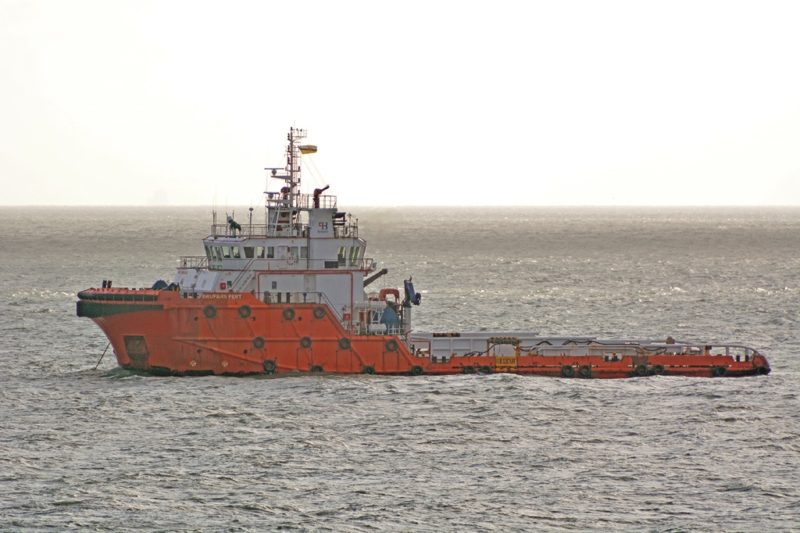
TANKERS LAID-UP IN BRUNEI BAY
Brunei Bay is an extensive area of relatively calm water and is ideal for the laying up of ULCC and VLCC tankers, as well as other types of ship. The vast bay was first used in the early 1970s for this purpose, and it very much continues today with this function and can accommodate hundreds of ships of every imaginable type.
The lay-up area is situated near the East Malaysian island of Labuan on the eastern part of the bay in what was formerly North Borneo (Sabah). The benign weather and shallow, sandy bottom give perfect and extremely safe anchoring, with constant military protection from the nearby bases of the Brunei Navy and Malaysian Navy. The island of Labuan was part of the Sultanate of Brunei for three centuries from the 15th century, as well as most other parts of north and west Borneo. The British were first attracted to Labuan in the early 1840s, with James Brooke acquiring the island on 18th December 1846 for the British Crown under the Treaty of Labuan with the Sultan of Brunei. The island was a reward to the British for assistance to the Sultan of Brunei in combating pirates. James Brooke was appointed as the first Governor in 1848 in Victoria, the capital of the island, and there are six smaller islands.
Labuan Island was connected by a telegraph submarine cable laid by the Eastern Telegraph Company of London with North Borneo (Sabah), Singapore and Hong Kong in 1894. The island became part of the Straits Settlements of Malaya on 1st January 1907, and has grown in importance over a century to become an international financial and business centre, as well as having a big base for offshore support vessels serving the deep-water oil and gas rigs of the region.
The Japanese Navy anchored off the island of Labuan on 14th January 1942 during World War II, and it was then garrisoned by units of the Japanese 37th Army until June 1945, which also controlled North Borneo (Sabah). The island served as an administrative centre for most of Borneo for the Japanese forces, with the island having an area of 36 square miles and a population which had grown to 100,000 people by 2020.
Giant tankers of the huge BP, Shell, Esso, Maersk, Woodside Petroleum Company, Island Navigation Holdings of Hong Kong, Greek owners, Saudi owners and other tanker companies were laid-up here. BP decided early in 1975 to use Brunei Bay for laying up its vast fleet of VLCCs, some of which went straight from the shipbuilding yard to lay up after the huge price hike in crude oil by OPEC in October 1973. Crude oil was not required in such large quantities, as users switched to other fuels and public transport rather than private transport. British Gull of the ‘Bird’ class of 16,195 dwt was despatched to Brunei Bay to act as a ‘mother’ ship and arrived at Labuan on 31st August 1975. She was ready to begin offloading pumping of fuel oil, water and other liquids from laid-up tankers, as well as to effect crew transfers of tankers to be put into ‘cold lay-up’, a process that takes from two to three weeks to complete. This is in stark contrast to the ‘warm lay-up’ given to the big fleet of cruise ships during the COVID-19 pandemic, where generators are run constantly on expensive diesel oil to provide electrical power for navigational, lighting and cabin facilities for up to 140 staff serving onboard.
The Dutch flag Shell tanker Sepia was the first company ship to arrive for lay-up in Brunei Bay on 3rd April 1975, with Marinula arriving three weeks later to become ‘Mother’ ship, and Capulonix arriving with damage on 18th May 1975. The Saudi royal family sent six fully loaded chartered VLCC tankers for lay up 26 miles from Labuan Island, as part of their ‘insurance’ policy in the uncertain times after the big OPEC price hike in October 1973.
The Saudi Aramco tanker company was later formed in 1980 as a 100% owned tanker company by the Saudi Arabian Government. The BP Shipcare facility on Labuan Island was purchased at the end of 2010 by three partners, former BP workers, and rebranded as Shipcare International. When freight rates are low, some shipowners place their oil tankers and gas tankers into long-term cold lay-up for future reactivation and conversion into FPSO (Floating Production, Storage & Offloading) and FRSU (Floating Storage & Regasification Unit) vessels. The cost of cold lay-up is less than 10% of keeping a vessel with a full crew and full bunker tanks waiting off ports of the world for the next cargo, which may not turn up for many months.
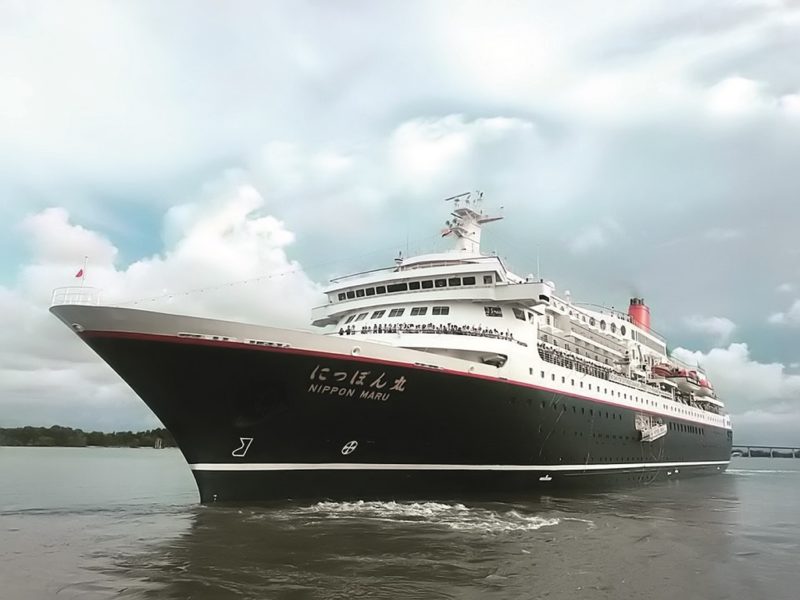
LNG EXPORTS to JAPAN, MALAYSIA, SOUTH KOREA and TAIWAN
Royal Dutch Shell began the export of LNG from Brunei to Japan in 1972 with the first of seven LNG ‘G’ class tankers, Gadinia, followed by Gadila, Gari, Gastrana, Gouldia, Geomitra and Genota. The class were steam turbine powered and carried an average cargo of 75,000 cubic metres of LNG on each voyage to the Osaka Gas terminal at Senboku, and the Tokyo Gas terminal at Negishi and the Tokyo Gas terminal at Sodegaura. Gadinia had carried over one thousand such cargoes by the end of 1980. The septet were later transferred to Brunei Shell Tankers Sendirian Berhad, but still managed by Stasco in London, and renamed after Brunei fishes as Bebatik, Bekalang, Bekulan, Belais, Belanak, Bilis and Bubuk respectively.
Brunei Gas Carriers Sendirian Berhad (BGC) was established in 1998 and is a joint venture between the Government of His Majesty the Sultan, and Yang Di Pertuan of Brunei Darussalam, Shell Gas B. V., and Diamond Gas Carriers B.V. BGC then modernised its fleet of LNG carriers with a trio of 147,000 m3 capacity named Abadi in 2002, Amali in 2011, and Arkat in 2011. A pair of even greater capacity membrane carriers were delivered in 2014/15 by the Hyundai Heavy Industries yard in South Korea as Amadi and Amani of 154,800 m3, and with a higher service speed of 19.5 knots to cover the voyage of 4,000 kilometres from Brunei to Japan or South Korea. This enabled the last pair of the ‘B’ class, Bebatik and Belanak, to be released from service in June 2018 after long careers of 45 years. The ‘A’ class have always delivered their cargoes on time and have won awards for their operations from several international bodies, with the ‘A’ and ‘B’ classes having carried over 7,000 cargoes of LNG since 1972.
A second 50% Brunei Government owned company, Brunei LNG (BLNG) had been founded in 1969 and opened for business in 1973, with Shell Overseas Holdings having a 25% share, and Mitsubishi of Japan also having a 25% share. BLNG had carried over 193 million tonnes of LNG by 2016 and delivered over five thousand cargoes in chartered tonnage from BGC and other companies. BLNG sells its LNG to Japanese terminals at Osaka and Tokyo, and South Korean terminals at Pyeong Taek and Inchon, and the wider South East Asia gas market.
NEW REFINERY AT PULAU MUARA BESAR ISLAND
Shenzhen Hengyi Corporation of East China was established in 2000 and began production at a $3.444 billion refinery in January 2020 on Pulau Muara Besar Island off Serasa near Muara. The refinery takes in 160,000 barrels of crude oil per day, and refines half a million tonnes per year of oil products such as gasoline, diesel oil, fuel oil, aviation fuel (Avgas), and LPG, as well as one million tonnes per year of aromatics. A full production of six million tonnes per year of all of these commodities was expected by 2022. Gasoline, diesel oil, fuel oil and LPG were exported to the Philippines, Indonesia and Australia, while Avgas was exported to the United States of America, Hong Kong and Japan. Some of the output is for feedstock operations in China, with Shenzhen Hengyi Corporation a leading manufacturer of synthetic fibre, polyester and plastic cups using PTA (Pure Terephthalic Acid). The oil refinery was the largest investment by a Chinese company outside China.
The refinery is supplied by Royal Dutch Shell with crude oil signed in a fifteen year agreement in a ‘swap’ deal with Shell supplying the crude oil and Shenzhen Hengyi Corporation supplying Shell with refined products. The refinery, hydrocarbon cracking unit, and aromatics plant was constructed by Lanzhou LS Heavy Engineering Co. Ltd. over a two year period, while the tank farm was constructed by Kunlun Construction & Engineering, a unit of the State Energy Group of the China National Petroleum Corporation. Thousands of Chinese workers built these large new plants, along with a bridge connecting the island to Muara and the capital of Bandar Seri Begawan. Shenzhen Hengyi Corporation began in business in a small way, and had grown massively to sell $11.68 million worth of synthetic fibre, polyester and plastic cups by 2015.
Total Chinese investment in Brunei Darussalam has totalled over $4.1 billion in recent years, with the Sultan of Brunei hard pressed for new investment into his country to diversify away from the export of LNG and reduce the unemployment rate of 7%, and youth unemployment of 15%. This investment total will almost certainly rise in future as China ramps up its ‘Belt and Road’ initiative.
This ‘21st century Maritime Silk Road’ is designed to increase massively the links by China with all of the countries of South East Asia, Africa and Eurasia through a network of ports, refineries, roads, railways and giant industrial parks.
The construction project outlined above is only Phase 1 of three phases of massive construction work. When all of the Pulau Muara Besar construction projects are completed, there will be a workforce of 10,000 on the previously uninhabited island. Large crude oil, refined products and LPG tankers already call at the new refinery, such as the Livanos of Greece owned Aframax tanker Achilleas of 157,890 dwt and built in 2010 and currently trading between Singapore and Muara.
This revenue provides a stabilising effect on the economy of Brunei Darussalam if LNG exports ever decrease in the future. The ‘Maritime Chinese Silk Road’ will also help this country with only a very small land area into the foreseeable future.
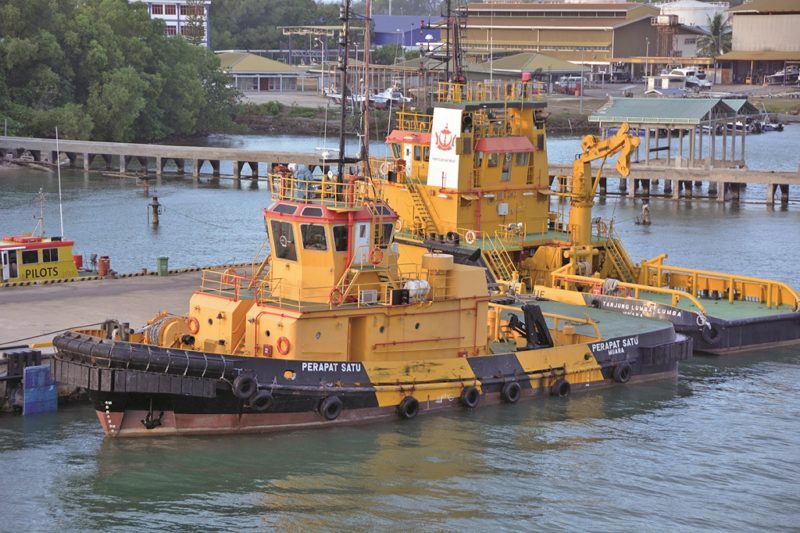
ROYAL BRUNEI NAVY
This naval defence force of Brunei Darussalam has a well equipped fleet of patrol boats whose main responsibility is to conduct Search & Rescue (SAR) operations to deter and defend Brunei waters against attack mounted by seaborne forces. It was established on 14th June 1965 and is based in the Port of Muara with a fleet of four Offshore Patrol Vessels of length 80 metres, 22 Inshore Patrol Boats of length up to 40 metres, three Fast Attack Craft of up to 37 metres, and three small landing craft. An order placed on the Clyde with BAE Systems for three corvettes equipped with Exocet missiles and Seawolf GWS25 anti-missile systems was placed in 1995, with the three corvettes launched from the Scotstoun yard in January 2001, June 2001 and June 2002 and then were completed and put into lay-up. They were not handed over due to claims by the Royal Brunei Navy that the class failed to meet the required specifications. Arbitration and contract dispute negotiations dragged on for years, eventually to find a mutually acceptable solution, and the corvettes had moved to be laid up at Barrow on Furness in 2011. The class of three were eventually commissioned into the Indonesian Navy in July 2014, nearly twenty years after the order was placed.
SUMMARY
The huge Chinese investments in Brunei Darussalam by the Chinese State-owned ports corporation, Guangxi-Beibu Gulf International Port Group, as well as by the Shenzhen Hengyi Corporation Group are the main very welcome huge investments for the Sultan of Brunei to overcome possible hard times in the future.
The ‘Chinese Maritime Silk Road’ is very much a realistic target by the Chinese Government to obtain a bigger share of the worldwide container and shipping markets for their huge exports, instead of relying on Western container lines. The new refinery on the island of Pulau Muara Besar island will produce huge amounts of oil products and feedstocks for Chinese synthetic fibre and polyester plants, and will balance any possible downturn in the current export of LNG, the main source of revenue of Brunei Darussalam.

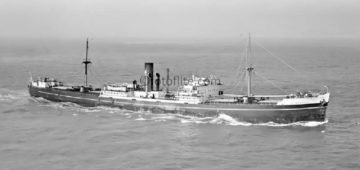



Comments
Sorry, comments are closed for this item